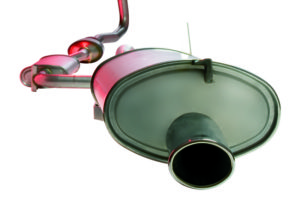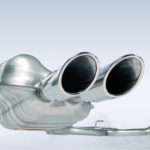How to avoid issues through incorrect fitment with Bosal Automotive & Industrial Components.
As an essential part of an engine’s emission system, the exhaust removes harmful emissions to keep vehicle occupants safe. Correct installation is therefore crucial to help prevent problems, such as leaks from joints and premature failure, which can have potentially hazardous effects.
Incorrect fitting often accounts for a significant amount of problems relating to exhaust systems, rather than the part itself, which is why correct installation not only ensures secure assembly but also leak-free operation. In the case of the latter, leakage from any joints can result in fumes entering the vehicle. Incorrect mounting can also cause the system to be put under excessive strain and consequently subjected to additional road shock and vibration, leading to premature failure.
Vibration is also a general issue that can impair the exhaust system and is a common problem. Although the exhaust system is suspended from the vehicle chassis, it is attached to the car’s engine and is therefore subject to rattling or buzzing, which must be insulated from the vehicle and prevented from transmitting into the passenger compartment.
Preparing for exhaust replacement
- Thoroughly examine the exhaust system and make sure there is enough space to remove and replace the failed item.
- Remember that exhaust gases are harmful and can be lethal, so never work on the exhaust system whilst the vehicle is running.
- The exhaust system can also get very hot, so always let the vehicle cool down sufficiently before beginning any exhaust repair.
- Ensure you have the correct equipment and replacement part before removing the failed item.
- Bosal also recommends that new mountings are used when fitting a replacement exhaust system. The old clamps and rubbers are subject to the usual wear and tear, and fitting with new mountings reduces the risk of vibration and subsequent noise from the replacement part.
Fitting steps
a) Familiarity with the basic components of the exhaust system is crucial prior to fitting.
b) Check all required parts by laying out the full system on the floor and that those parts are correct for the vehicle.
c) Check individual parts for any signs of damage to ends and that all welds are intact; also that brackets are not damaged.
d) Loosely assemble the system to the vehicle, starting at the down pipe and supporting where necessary to avoid excessive strain on manifold studs.
e) Ensure that each pipe is properly aligned.
f) Pay attention to any embossed text on silencer products that may indicate which direction it should be installed.
g) Any exhaust pipe that fits inside one another should be assembled so that the pipe nearest the front of the vehicle fits inside the pipe nearest the rear of the vehicle.
h) With the complete system loosely hung, proceed to tighten up each component in sequence, starting at the front.
i) Flange type joints should be tightened evenly to avoid damage, ill fitting and/or leaks.
j) During this tightening process examine the hangers for undue strain, together with clearances to the bodywork, i.e. check to see if the tailpipe is clear of the bumper, and adjust the system as necessary to obtain the best possible position with the least strain on the hangers.










